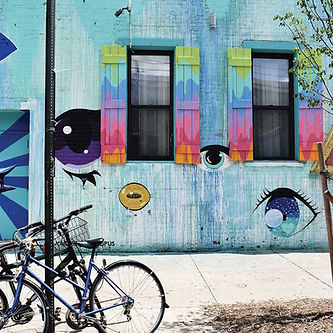street art
By Misbah Fathima
The word “graffiti” is actually plural of “graffito” and was first used in the late 18th, early 19th centuries when studies of Pompeii discovered wall markings. These markings were described “as an uncultured art form and as the product of a pure urge to create”.In the Roman world, graffiti was perhaps the only way to talk back to the oppressive authority.
After the Romantic era interest in graffiti as ‘pure creative act’, the Victorians returned to ‘real art’, losing interest in art that was produced in the streets. A negative attitude toward the graffiti only began by the end of the 19th century because it started to be associated with the lower level elements of the society.

Bangalore’s ever-changing cityscape in seen getting an incredible makeover. The people involved in this are the St+art India Foundation, founders of the county’s biggest street art takeovers. The St+art festival has brought the city’s streets and walls to life, with all kinds of gorgeous murals and interactive installations, alongside a series of workshops, performances and talks. They together have created permanent, space-specific murals and visual narratives at central areas like Cubbon Park, MG Road, Majestic Metro Stations, and surrounding areas with the aim of exposing visual arts to larger audiences while simultaneously advocating social change through the pieces themselves.
The Foundation collaborated with the Srishti Institute of Art, Design and Technology to promote the idea of “opening spaces to dialogues, conversations and culture creation through the lens of the city”.
Highlights of Street Art in Bangalore
-
‘Harvest Moon’ mural
Anpu Varkey, a Delhi-based artist who grew up in Bangalore, has created a glorious harvest moon on a house near Halasuru Metro Station. The artist says, every person has wished upon the moon at some point in their life, and the moon represents our collective hopes and desires. “FYI, Anpu has also made a smaller moon near the Majestic Metro Station, in case Halasuru isn’t en route for you.
-
Naavu Idhevi- We Exist
One of the most interesting murals is ‘Naavu Idhevi- We Exist’, a collaboratin between five transgender persons who painted the wall under the railway bridge on Dhanwantri Road as a reminder of their existence in today’s dense society. The person behind the project, Poornima Sukumar’s Aravani Art Project that aims to create a space for the transgender community in society using art for expression and social change. Not only are the bold motifs and colours in the artwork vibrant and eye-catching, but also the subject makes one question our own perception of gender
.
-
Men
Dutch artist Dawn Botlek has transformed Palace Road using clever imagery. In an attempt to make the audience question and define what after art is, he had made a series of blue and white figures juxtaposed on the walls as scenes that will only make sense when the full mural is seen.
-
#MagneticMagestic mural
Mumbai-based artist Sameer Kulavoor has left his signature touch on the walls outside Majestic Metro Station with the #MagneticMajestic mural, where the magnet is symbolic of the site and how it attracts a wide range of people. “The density of people, architecture and things reduce as we move further away from the site itself. This I find very interesting,” he says about the artwork, which spells out the letters ‘M-A-G-N-E-T-I-C-M-A-J-E-S-T-I-C’ across two walls as fragments alongside detailed imagery that scream urbanisation.
-
Legends of the Lake
Bangalore’s beloved artist and graphic novelist George Mathen aka Appupen has done wonders to the Majestic Metro Station, giving the otherwise lifeless station a jolt of life with his series of illustration and totems inspired by the story of the Dharmambudhi Lake, which dried up years ago, ironically on the land where the station currently stands
-
Kempegowda mural
Bangalore-basss artist Ullas Hydoor has created a massive mural on Dhanvantri Road titled ‘Remember’ as a commemoration of sorts to Bangalore’s founder Kempegowda, who was instrumental in planning the city’s structure and architecture. ‘Remember’ is a poetic ode to connect the people of the city to what it was once, and what it has now become.




